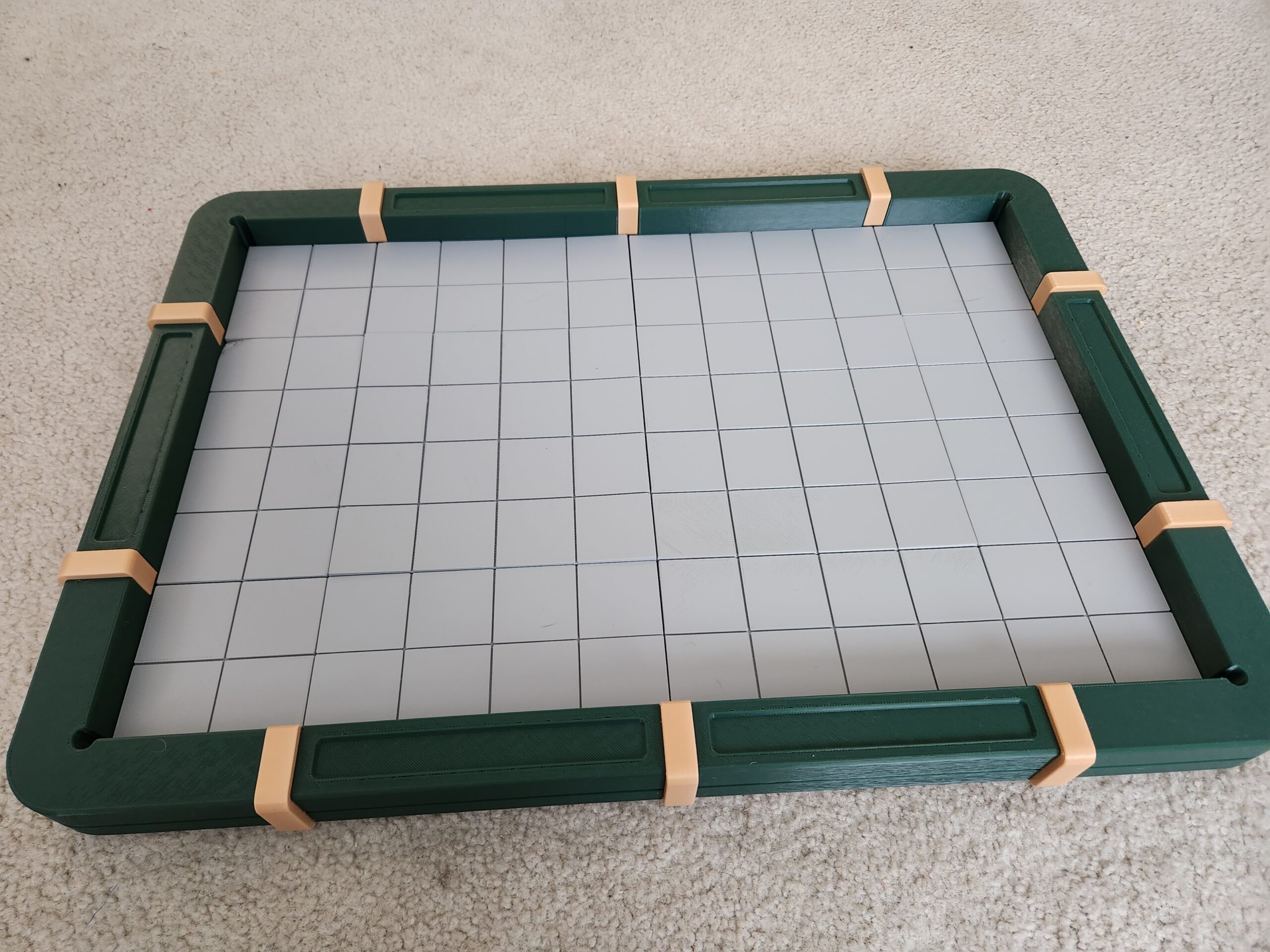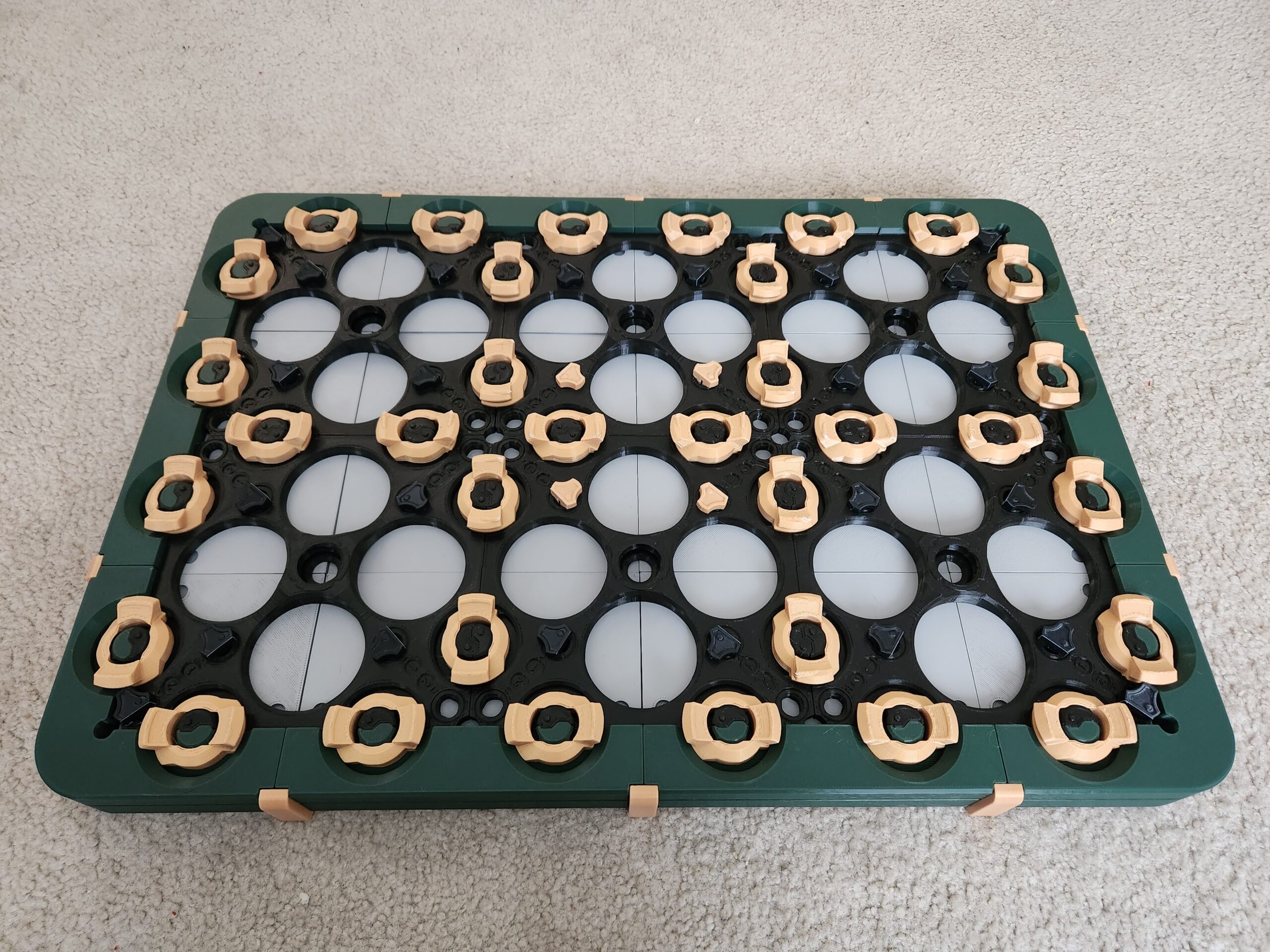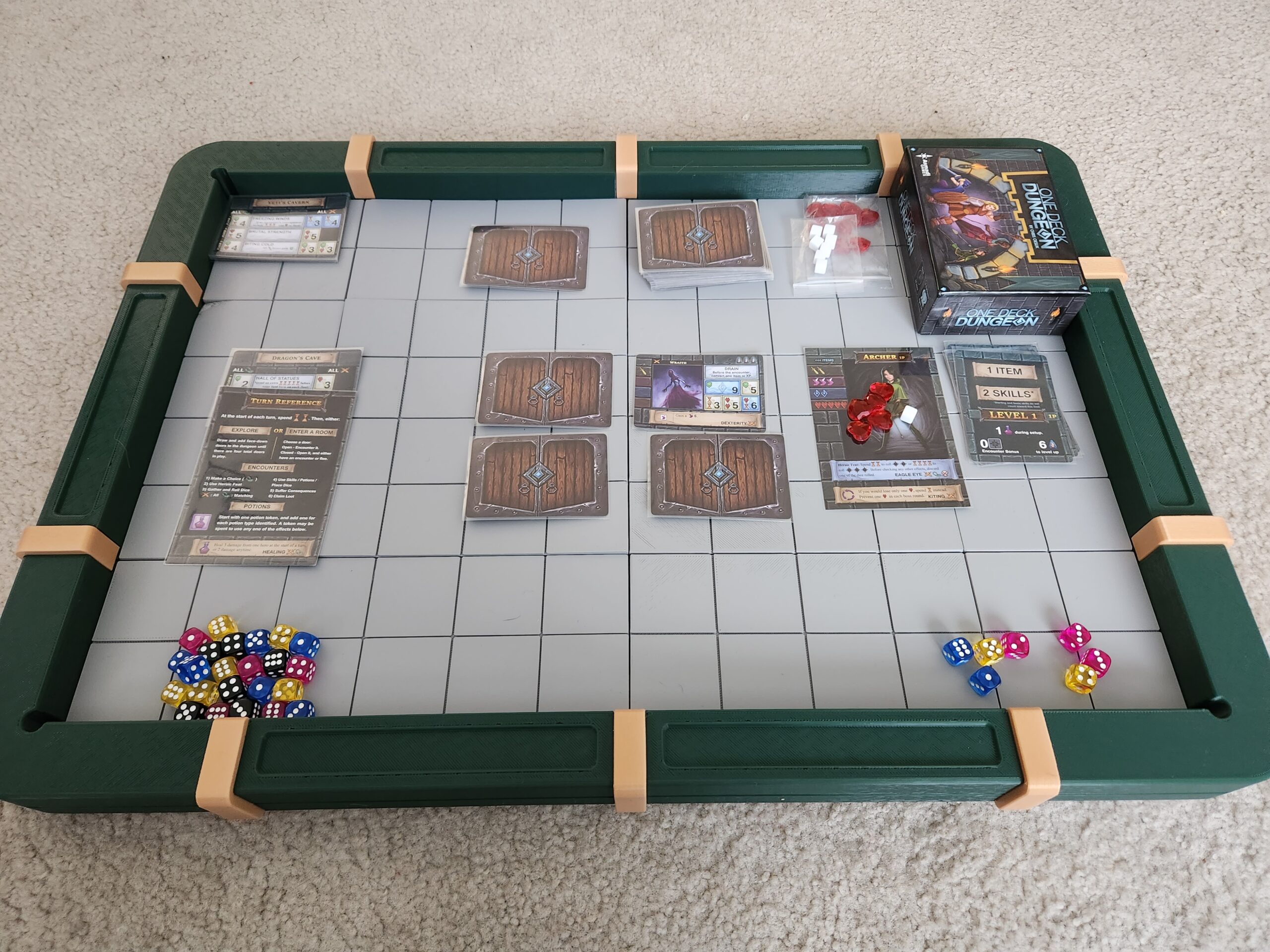Over the last several days, I’ve been printing a “gaming in bed” gaming table that uses the StageTop system I backed on kickstarter. My goal was to build a table that I could use for gaming in bed, especially at a hotel when I’m on travel. Overall, it’s been a fun project – there are some things that I liked/didn’t like, but at the end of the day, it was good.
Details and the breakdown after the jump.
Here are some pictures:
Top, bottom (will mostly be unseen), and with One Deck Dungeon on it.
For the 16″x24″ tabletop it required:
- ABS (various locks and clips): ~0.450 kg, ~36h18m.
- PLA: 2.815 kg 98h22m.
- Tiles (grey): ~0.980 kg, ~32h8m.
- Rails (green): ~1.024 kg, ~22h12m.
- Frames (black): ~0.815 kg, ~21h41m.
- To do: short legs (waiting for release).
- Print Settings:
- Printer: Prusa i3 MK3S+.
- Nozzle: 0.6mm.
- Layer height: 0.2mm layer height for the ABS, 0.3 for everything else.
- Infill: 10% for Frames, 15% for everything else.
- Default profiles for everything.
- Tiles printed upside-down to get a smooth surface finish.
- Total: ~3.265 kg of filament, ~$80.73 (Hatchbox ABS/PLA), ~134h40m printer time.
What I like:
- All printable pieces.
- Almost everything fits together snugly.
- Nice locks for almost everything makes the assembly feel stable.
- Easy assembly/disassembly.
What I didn’t like:
- The tile locks aren’t great, but just okay. They hold the tiles in place, but don’t really fasten them as well as I would like. I didn’t really see a difference in my ability to dislodge tiles between the “locked” and “unlocked” state of the tile locks.
- Tiles warped a bit – this is certainly my fault, but I’m not convinced it’s entirely avoidable.
- Top surface is not smooth – it still needs something else as a topper.
- It’s not quite rigid enough to scale larger without lots of legs (I’m hoping for only four). I suspect for larger sizes I’d need a leg for every 8″ (i.e. six for this build), which is how it’s supposed to work, but doesn’t feel great.
As I said, so far this feels good, but I can’t help but think about tweaking it a bit to make it better.
One easy thing would be to get a full-sized playmat; this would resolve the surface issues I noted, and would be easy to do with this table and any future table plans without adding any extra time. The flip side of this is that with various multiples of 8″ side lengths, this almost certainly will require special ordering something or cutting something to fit. If this was my plan in the future, I’d use the most basic tiles and do what I could to make them as cheap as possible, as the playmat would be an added cost.
Another thought I had was to do something instead of 3d printed tiles – i.e. either acrylic, wood (possibly covered with felt or similar), or tile. For this to work, I’d need to either drill holes for the tile locks, 3d print some spacers that glue on and lock in, or ignore them (with the consequence of reduced rigidity in the frame). This could be significantly cheaper than the 3d printed tiles and arguably better (more rigid), but, of course, breaks the “all 3d printed” aspect (which, is really only a problem because I’m a terrible carpenter). I also see this coming in a couple of different forms – I could do a single-piece tile to fit the entire table – this has the advantage of being smooth and rigid, but breaks modularity. I could alternately do “tiles” to keep the modularity, but then the top isn’t necessarily smooth again (though I do believe it would be a significant improvement). In either case, if the tiles are cheaper, that leaves more budget for a playmat topper for that great gaming surface.
The last thing I’ve been thinking about is trying to make the frame more rigid, especially for larger tables (my next project is planned to be a floor modeling/painting table, likely 16-24″x32″). Here, the goal is to be able to scale without having so many legs (I’d love to be able to do a larger table with only four legs). I’m not sure how I might do this, though I was thinking about a steel pipe frame that the frames and legs can connect to. I think this would require redesigning the legs to accommodate the rigid frame, which is maybe a small enough change, but I’m not sure yet until I play around with it.
Overall, again, I really enjoyed the build and it’s definitely going to do what I want for this build and I’m looking forward to the next one!



